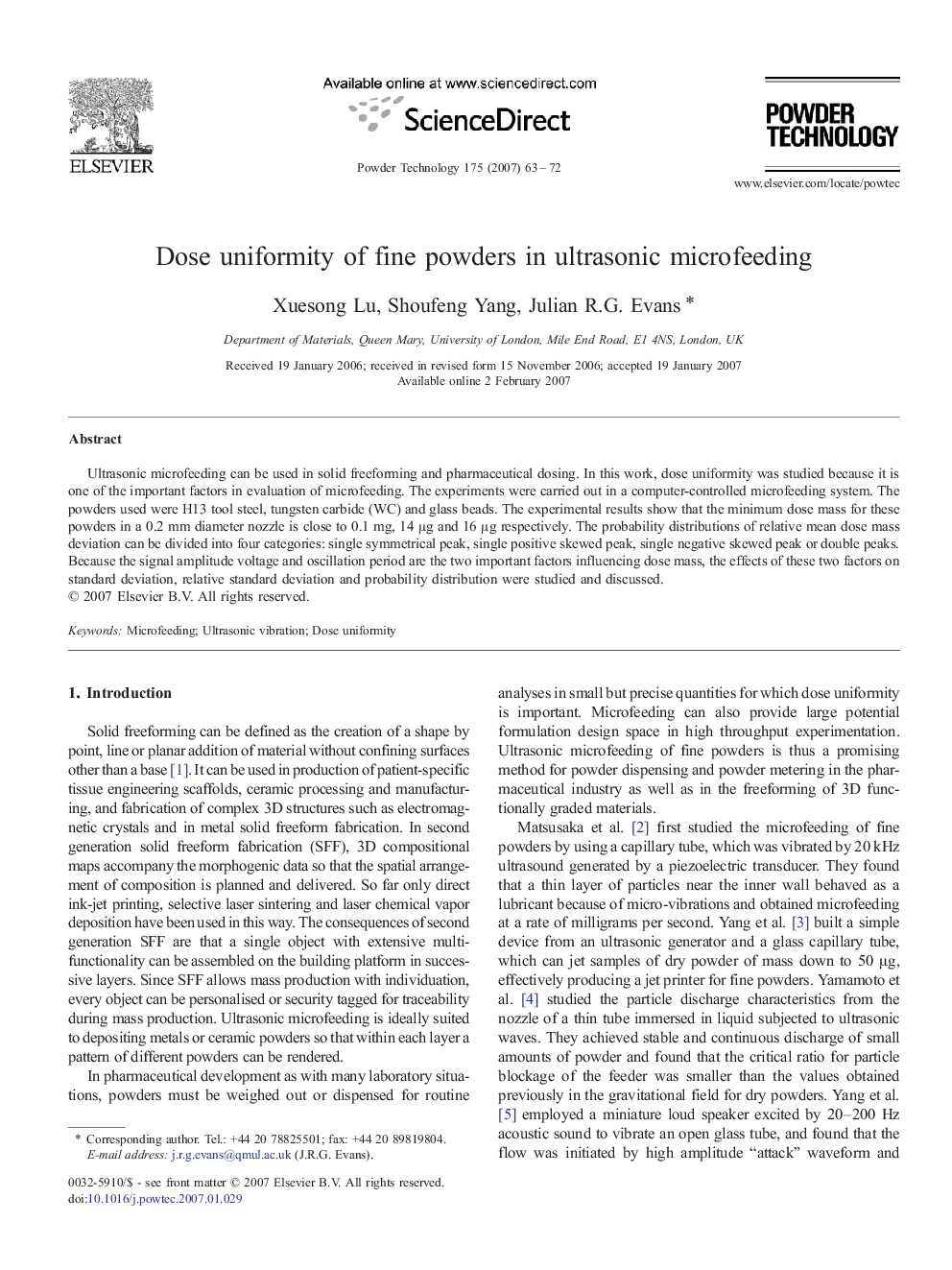| کد مقاله | کد نشریه | سال انتشار | مقاله انگلیسی | نسخه تمام متن |
|---|---|---|---|---|
| 239055 | 465792 | 2007 | 10 صفحه PDF | دانلود رایگان |

Ultrasonic microfeeding can be used in solid freeforming and pharmaceutical dosing. In this work, dose uniformity was studied because it is one of the important factors in evaluation of microfeeding. The experiments were carried out in a computer-controlled microfeeding system. The powders used were H13 tool steel, tungsten carbide (WC) and glass beads. The experimental results show that the minimum dose mass for these powders in a 0.2 mm diameter nozzle is close to 0.1 mg, 14 μg and 16 μg respectively. The probability distributions of relative mean dose mass deviation can be divided into four categories: single symmetrical peak, single positive skewed peak, single negative skewed peak or double peaks. Because the signal amplitude voltage and oscillation period are the two important factors influencing dose mass, the effects of these two factors on standard deviation, relative standard deviation and probability distribution were studied and discussed.
Ultrasonic microfeeding is ideally suited to solid freeforming, pharmaceutical dosing and applications involving metering of small amounts of powder. The powder is dispensed from an open capillary by bursts of ultrasound to give doses as low as 14 μg. This paper examines the effects of signal amplitude and oscillation period on dose uniformity for three powders.Figure optionsDownload as PowerPoint slide
Journal: Powder Technology - Volume 175, Issue 2, 6 June 2007, Pages 63–72